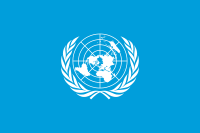
Photo from wikipedia
Background Malaria continues to be a leading cause of morbidity and mortality in most countries in Sub-Saharan Africa. Insecticide-treated bed nets (ITNs) is one of the cost-effective interventions for preventing… Click to show full abstract
Background Malaria continues to be a leading cause of morbidity and mortality in most countries in Sub-Saharan Africa. Insecticide-treated bed nets (ITNs) is one of the cost-effective interventions for preventing malaria in endemic settings. Ghana has made tremendous efforts to ensure widespread ownership and use of ITNs. However, national coverage statistics can mask important inequities that demand targeted attention. This study assesses the disparities in ownership and utilization of ITNs among reproductive-aged women in a rural impoverished setting of Ghana. Methods Population-based cross-sectional data of 3,993 women between the age of 15 and 49 years were collected in seven districts of the Upper East region of Ghana using a two-stage cluster sampling approach. Bivariate and multivariate regression models were used to assess the social, economic and demographic disparities in ownership and utilization of ITN and to compare utilization rates among women in households owning at least one ITN. Results As high as 79% of respondents were found to own ITN while 62% of ITN owners used them the night preceding the survey. We identified disparities in both ownership and utilization of ITNs in wealth index, occupational status, religion, and district of residence. Respondents in the relative richest wealth quintile were 74% more likely to own ITNs compared to those in the poorest quintile (p-value< 0.001, CI = 1.29–2.34) however, they were 33% less likely to use ITNs compared to the poorest (p-value = 0.01, CI = 0.50–0.91). Conclusion Interventions aimed at preventing and controlling malaria through the use of bed nets in rural Ghana and other similar settings should give more attention to disadvantage populations such as the poor and unemployed. Tailored massages and educational campaigns are required to ensure consistent use of treated bed nets.
Journal Title: PLoS ONE
Year Published: 2019
Link to full text (if available)
Share on Social Media: Sign Up to like & get
recommendations!